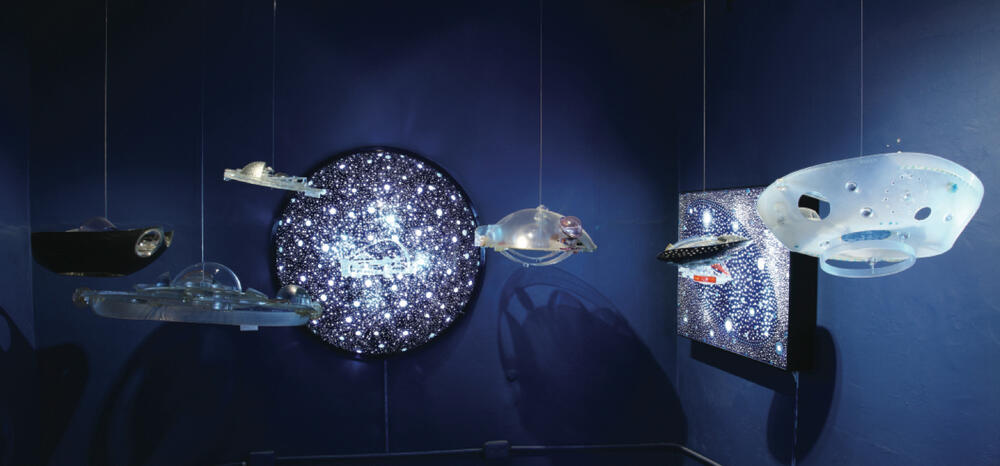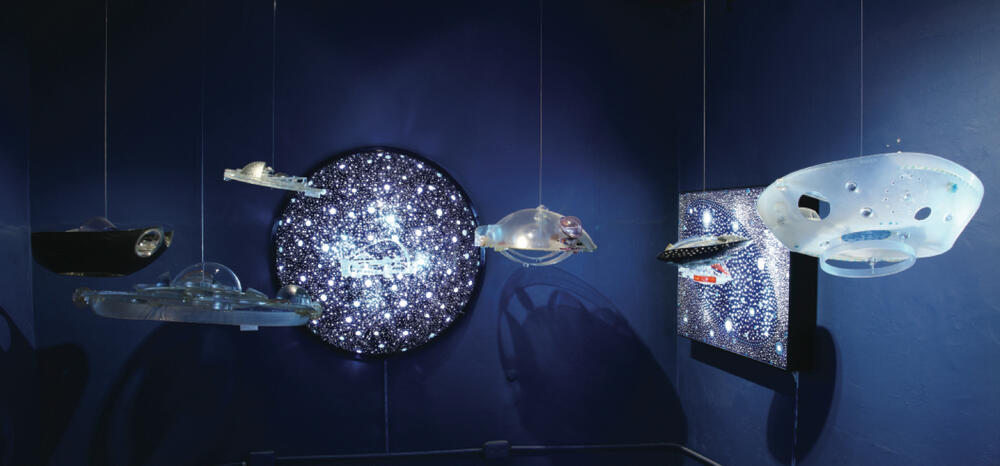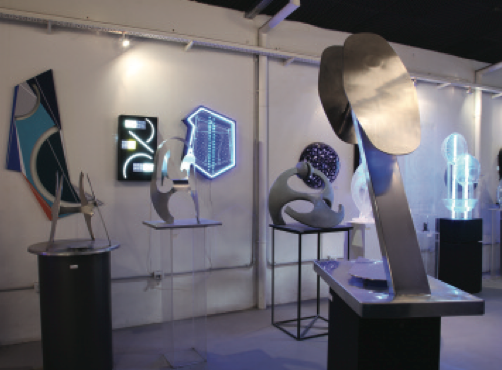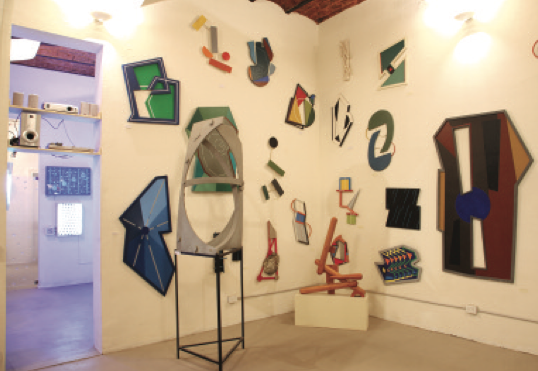Gyula Kosice
Life and Work
Located in the legendary neighborhood of Almagro, the Gyula Kosice Workshop and Museum gathers together a considerable number of its founder’s works, belonging to all the phases of his prolific artistic trajectory. Light sculptures, kinetic works, hydraulic sculptures, pieces of ambient art and participative works welcome the spectator in this particular venue that is, at the same time, a museum and a workshop, an exhibition space and a centre for artistic creation.

Kosice occupies a central place in the history of Argentine art, and he is a recognized pioneer in the experimentation with Kinetic and Light Art at the international level. His early incursion into the Concrete Art movement in the mid-1940s, and in particular, the creation of the MADI movement, placed him at the heart of the Avant-Garde in the Río de la Plata region and of the discussions regarding the future of artistic practice, which was then immersed in a struggle between figuration, abstraction, and a non-illusionist art depicting concrete, physical realities.
Along this latter line of thought, Kosice chose the path of sensory and technological research, which led him to produce works using neon lights, engines and water flows in constant movement. Employing new materials such as acrylic or pliable light tubes, he invented a universe of changing shapes, often ethereal and de- materialised, which have a strong impact on the senses and emotions without resorting to the supplement of a narrative or a subject matter. Thus, his works are aimed at activating perception and enjoyment, independently of the theory they embody. As the later kinetic movements would highlight, these productions were not aimed at a specialialised public, knowledgeable about art history and its theories, but rather at any person with the capacity to perceive and respond to the aesthetic effects of light, movement and colour.
Faced with the formal complexities of contemporary pictorial movements, Kosice opted for an integrating and sensible art, closely related to vital experiences. This concern led him to resort to water as a natural and essential element, and at a later stage, to design a city, the Ciudad Hidroespacial (Hydrospatial City), that would transform social relationships and the whole panorama of
life. This work was recently acquired by the Museum of Fine Arts, Houston, but it can still be viewed in the Almagro museum.
The Hydrospatial City was to become a landmark in Gyula Kosice’s career. Like Constant during the same period, the Argentine artist concerned himself with housing problems, and he imagined an urban structure suspended in space, relying on clean and renewable energy sources. In his plan, however, he did not only change the city but also the activities of its inhabitants, which then became poetic ones. His project contemplated the totality of life, and not its basic needs, exclusively.
His later production inquired further into the possibilities of contemporary technologies and industrial materials. His recent work treads the path of digital technology and continues exploring light art through the incorporation of the variable and multi-chromatic systems based on LEDs. In this way, the museum is permanently welcoming new creations, which transforms the traditional image of these spaces.
Indeed, the Gyula Kosice Workshop and Museum is not a static space, conceived to exhibit the selected moments of a more or less closed history founded on an endlessly repeated discourse that proclaims the artist’s success. On the contrary, it is a space that is full of life and energy, a space where new works, ideas and proposals originate; a space that the artist attends on a daily basis to continue with his work of more than sixty years devoted to creation.
A recently published book (Autobiografía, 2010) records the artist’s developments along this long road. Yet a single visit to the Workshop/Museum suffices to capture the vibrant, vital, and aesthetic experience.






